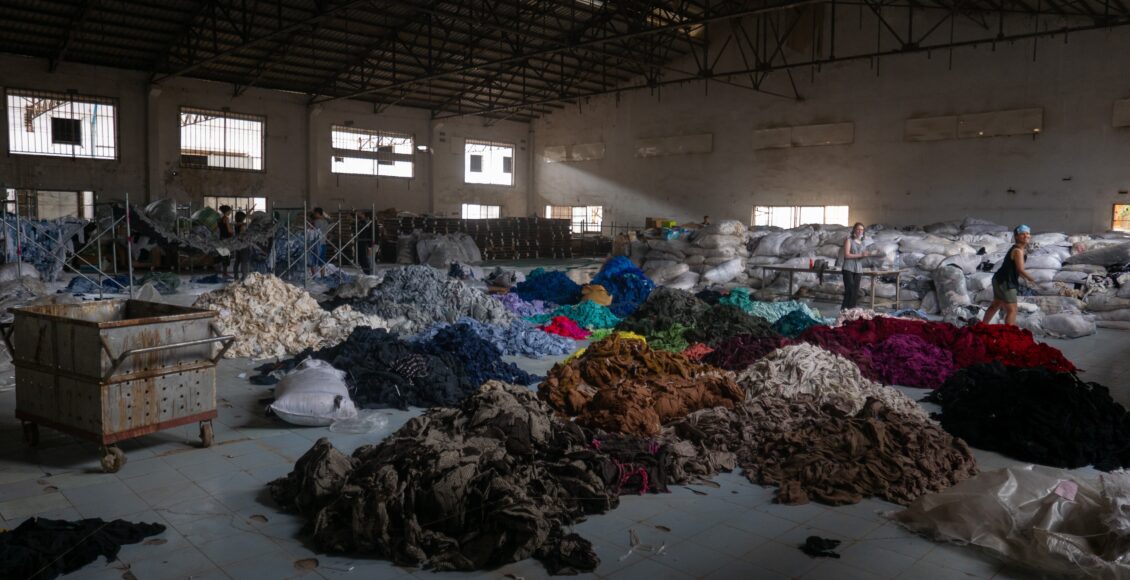Greenwashing: Unearthing Deceptive Marketing Strategies

Of the roughly 17,000,000 tons of textiles produced within the United States in 2018, approximately 11,000,000 tons ended up in a landfill. The apparel industry is responsible for the use of over 5,000,000,000,000 litres of water per annum. The textile and garment industry releases as much as 1,700,000,000 tons of carbon into our atmosphere each year. So you might be wondering: How exactly are companies getting away with this? As a consumer, it is easy to believe your favourite brands when they claim to be more sustainable than the rest, but here lies the sad truth.
Many fashion brands appear (or even claim) to use sustainable manufacturing, packaging, and transportation methods, but the majority of them do not. The phenomenon of fashion brands and retailers falsely presenting themselves as “sustainable” or “eco-friendly” through marketing is common – it’s a practice known as greenwashing, and it seems to work pretty well.
Greenwashing includes any case in which a company falsely promotes any of their practices as being environmentally sound. Classic examples of this specific to the fashion industry may include suggestions of carbon neutrality scattered among product descriptions, or references to the use of organic or partially recycled textiles. For example, take popular fashion brand Aritzia’s perceived image: A clean and expensive aesthetic in combination with some subtle greenwashing creates the perfect illusion of a company that definitely cares about the welfare of their employees and cannot possibly be wasteful or harmful to the environment. Regardless of their chosen method, the image presented by companies who use greenwashing strategies in their marketing almost always exaggerates the reality of their practices. As the climate crisis rages on in the media, an increasing number of consumers are becoming eco-conscious, and are therefore much more likely to reach for those brands which appear to be investing in making their operations more environmentally friendly. Unfortunately, due to a general lack of knowledge on the strategy among consumers and the wide range of ways in which companies incorporate it into their marketing, greenwashing has become a widespread phenomenon used by most, if not all, mainstream fashion brands.

Drone shot of a landfill in Banten, Indonesia. Most of the waste from clothing factories and discarded garments end up in landfills around the world like this one. Photo by Tom Fisk on Pexels.
Globalization has reduced the costs of clothing production exponentially, allowing for low prices that make each individual garment a disposable item in the eyes of consumers. Gone are the days of investment pieces; today, fashion trends come and go with such momentum that those who want to keep up feel the need to purchase new garments constantly. This fuels the success of the fast fashion industry and results in innumerable amounts of waste. But have no fear; through collective action, consumers can inspire the large-scale culture shift that the fashion industry needs
With a bit of time and effort, individual consumers can learn how to detect and avoid the trickery that is greenwashing. There are several indices dedicated to this exact task which are made publicly available online. Good On You is just one example of a platform which uses a scoring system to rate almost 3,000 brands on the social and environmental impacts of their practices. Circling back to Aritzia, the company claims to “take an evidence-based approach to sustainability, with a focus on driving long-term impact over short-term change” on the Sustainability page of their website. However, the Good On You index gives them a score of 2, which they refer to as “Not Good Enough”. Through its rigorous analysis of the company, Good On You has determined that Aritzia does not seem to be making much of an effort to reduce their textiles waste or their use of hazardous chemicals. These results heavily contradict the message being pushed through Aritzia’s various marketing strategies. On the other hand, there are many other brands that have received the highest rating of 5, or “great”, at price points similar to or lower than that of Aritzia. While options such as vintage and thrift shopping are ultimately the most sustainable choice for those who want to limit their impact on the environment while still adding fresh pieces to their wardrobe, it is not always easy to avoid purchasing a newly made garment once in a while. Consumers can use indices like Good On You to their advantage to find those brands which are actively practising sustainability in all aspects of their supply chain.
While greenwashing is incredibly unethical, there are many ways in which it can also be considered illegal. In most cases, greenwashing is used to present incomplete and misleading information, which is prohibited under Canada’s Competition Act. Canada’s Competition Bureau provides more information about greenwashing as a deceptive marketing practice, and urges consumers to report any instances of false or misleading environmental claims. An example was seen with the class-action lawsuit against H&M in 2022, when they were caught falsifying environmental scorecards by the Sustainable Apparel Coalition’s Higg Index. After ending in a $36,000,000 settlement, H&M removed the scorecards from their website and adjusted some of the claims that they had made with regards to the sustainability of their materials. While H&M has a long way to go in terms of ethics and sustainability, the company has recently set more ambitious goals for their future environmental impact.

Jean jacket with button displaying “premium denim”, and text “we see what we want”. Photo by Julia Kuzenkov on Pexels.
The 2022 H&M lawsuit provides one instance of how consumers can come together to place large international clothing companies in the spotlight and create pressure for meaningful change. In a 2020 study published by the Pew Research Centre, interviews were conducted in an attempt to quantify public concern for the environment. It was found that 57% of individuals agreed that climate change is a serious problem, and 54% agreed that human activity contributes a great deal to climate change. There is an opportunity for everyday consumers to educate themselves and others on the realities of the fashion industry and make the switch to more sustainable consumption behaviours. The climate crisis represents a global issue which will only be perpetuated in the absence of collective action. With the general public perception of the climate crisis shifting towards heightened awareness and concern, consumers can come together and inspire a large-scale shift in the culture surrounding accountability and sustainability in the fashion industry.
Featured image: Hundreds of tons of clothing sit in an abandoned factory in Phnom Penh, Cambodia. Photo by Francois Le Nguyen on Unsplash.
Edited by Itai Epstein
